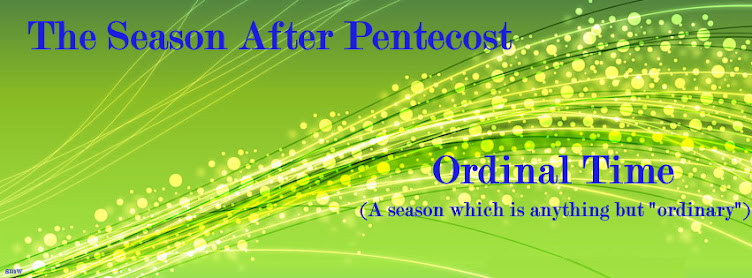In Part 2 of this series let us delve into the history of the Holy Rosary. Most Catholics who know a thing or two will say it started with St. Dominic in the early 13th century, and to a point they would be correct - but the tradition of praying 150 prayers (the full traditional Rosary) and using counting devices goes back much, much further into our Judeo-Christian heritage. The Psalter of King David goes back to at least the 5th century wherein monks would pray the 150 Psalms. To keep track, they would use a cord with 150 knots in it, similar to early rosary ropes/beads. Even prior to Christian use, the Psalms were sung in Jewish ceremonies at the Temple. Originally, or a very early addition, there were superscriptions to many of the Psalms, indicating the author, the contents and often the melody for that section (Jacobs).
St. Paul of Thebes, Hermit
3rd to 4th Century AD
St. Paul of Thebes was said to carry two bags and 300 pebbles. As he would say a prayer he would move a pebble from one bag to the other to keep track of his prayers. St. Clare, the sister of St. Francis of Assisi, also used this method of prayer. St. Paul was born about 227ad and lived to be 113 years old. The last 91 years of his life he spent as a hermit, where he also encountered St. Anthony the Great, also an ascetic, who developed a great devotion to the life of St. Paul. (Roman)
The Jewish Tzitzit
The ancient Jewish and biblical use of the prayer shawl or "tzitzit" or "talit" has specific cords tied into knots, similar to rosary cords. The knots, however, in the tzitzit are not enumerated for prayers - but as a reminder of God's commandments. The total of the cords twists and knots adds up to 613 to represent the Mitzvah, which are the commandments from the Torah beyond the Decalogue (Ten Commandments) most of us know well. The cords are on the four corners of the prayer shawl, which traditionally was worn all the time, though in modern times it is primarily used ceremonially. In Jewish orthodoxy, the prayer shawl is still worn under ones outer garment. Again, while the knotted cords do not directly refer to prayers - it is on the prayer shawl.
The biblical references to the tzitzit are found in Numbers 15:37-40 and in Deuteronomy 22:12. There is also reference in the New Testament (Luke 8:44) to Jesus wearing such a garment as the woman who suffered from "an issue of blood" for twelve years reached out and touched the tassel (hem or border in some translations) of Jesus' cloak and she was immediately healed. (Raj, 2013).
St. Dominic
St. Dominic was preaching the Gospel to the heretics embracing Albigensianism (who believed adultery, fornication and suicide were praiseworthy and did not accept there was a heaven or a hell nor a moral code). He was having little success then one day while in deep prayer and penance the Blessed Virgin appeared to him and stated: "Wonder not that you have obtained so little fruit by your labors, you have spent them on barren soil, not yet watered with the dew of Divine grace. When God willed to renew the face of the earth, He began by sending down on it the fertilizing rain of the Angelic Salutation. Therefore preach my Psalter composed of 150 Angelic Salutations and 15 Our Fathers, and you will obtain an abundant harvest" (Feeney). From this St. Dominic produced the fifteen mysteries of the Rosary - each mystery dealing with a significant part of Jesus' life. As he began preaching the Rosary, converts from the Albigenses began and caught fire throughout the land.
As one can clearly see, the use of beads and/or knotted cords is certainly not anti-Christian and is rooted in ancient Jewish tradition. It is a tradition we may proudly embrace.
Resources:
Feeney, Robert, St. Dominic and the Rosary, http://www.catholic-pages.com/prayers/rosary_dominic.asp
Jacobs, Rabbi Louis, The Book of Psalms, http://www.myjewishlearning.com/article/the-book-of-psalms/
Raj, T. V. Antony, September 10, 2013, Are The Tallit and Tzitzit of Jews Equivalent to Prayer Beads Used in Other Religions? https://tvaraj.com/2013/09/10/are-the-tallit-and-tzitzit-of-the-jews-equivalent-to-prayer-beads-used-in-other-religions/
Roman, Dr. Alexander, The Historical Development of the Orthodox Prayer Rope and Its Importance to Our Spiritual Life http://stillstoneandmoss.com/page.php?page=PrayerRopesArticleByAlexanderRoman and also http://www.rosaryworkshop.com/HISTORY-AlexRoman.html
Subscribe to:
Post Comments (Atom)
Feast of the Assumption
The Feast of the Assumption of the Blessed Virgin Mary - another example of "not-so-ordinary" days! These are COUNTING days - and...

-
In a recent post from Alan/Rhology on Beggars All , he said: >> sw: So you're confirming (again) that your local >> churc...
-
A friend of mine posed the following to me... Thoughts? Change occurs in official (non-defined) Catholic doctrine like this: 1. The d...
-
bossmanham Says: Tuesday, February 09, 2010 9:34:00 AM Hi CathApol, I know this post isn't on transubstantiation, but I saw your r...




No comments:
Post a Comment
Keep in mind while posting:
1) Please respond ON TOPIC to the article at hand.
2) Posts more than 4 weeks old are set to automatically save new comments for moderation - so your comment may not show up immediately if you're responding to an older post.
3) The "Spam Filter" is on - and randomly messages get caught in that filter. I have no control over which messages get caught in the spam filter and those that do must wait for me to mark them as "not spam." A message caught by the spam filter may show up for a moment, making you think it posted, and then disappear. Do not assume I have deleted your comment, it's probably just the spam filter and it will show up.